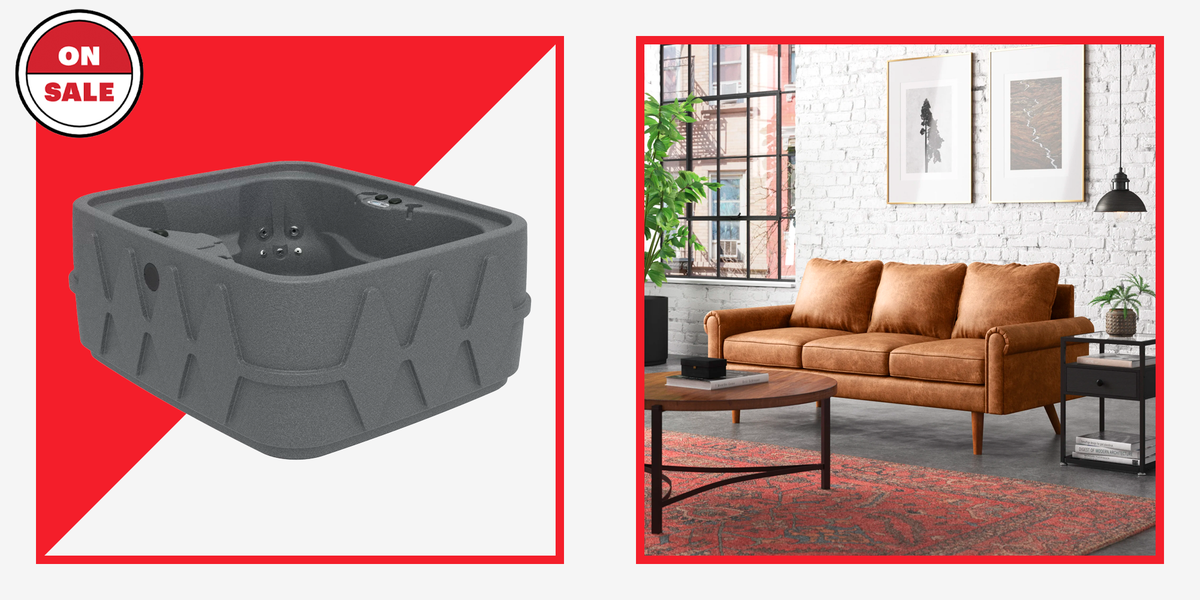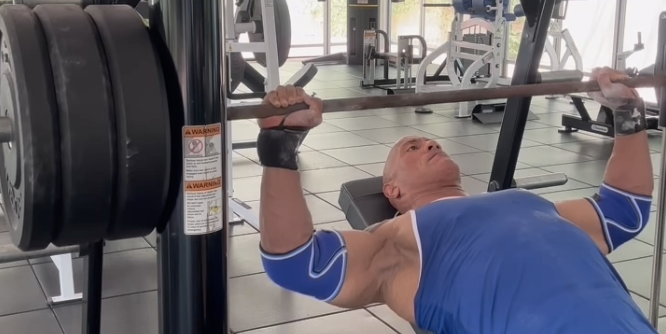THE NORDIC HAMSTRING CURL is one of the most notoriously difficult exercises in the gym—and it can be one of the most humbling. When most guys try to lower themselves into one, they fail. To add insult to injury, the end point is a face plant onto the floor.
As a soccer player at Marquette University, Greg Pignataro was no different. “Out of a roster of 30 Division-I players, we had one guy who could do one rep,” the now-32 year old says. “It was definitely not me. I was nowhere close.”
A decade later Pignataro can not only do a Nordic curl rep—he can do more than anyone. In December, the Phoenix-based trainer and owner of Never Past Your Prime set the Guinness World Record for Nordics in a minute, finishing 24 reps of the brutal exercise in 60 seconds.
But he didn’t actually set out to set a record: Pignataro just wanted to master the move, and built his rep count up over a year. After he saw a Mens Health article about UFC legend Georges St-Pierre doing just a few Nordic reps, Pignataro decided to see if a record existed—and if it might be feasible that he could break it.
Setting any type of physical record is a huge accomplishment for anyone, but especially for Pignataro. While playing soccer in college, he broke his back. In the years since, he’s embraced mobility work, and helped other athletes and regular gym-goers embrace the practice—and the Nordic curl—through his coaching. He’s also created an online program to help others nail their first Nordic, a move he calls the “lower body pull up.”
Pignataro took a few minutes away from the Nordic curl bench to talk to MH about tips for getting your first rep of the exercise, how he got inspired to start doing them again, and how other guys can choose big goals to go for—and strategies to see them through.
This interview has been condensed and edited for clarity.
How did you get started going for this record? And how does the MH GSP article fit into your story?
The first time I heard of Nordic curls was when I was a college soccer player. Out of a roster of 30 Division-I players, we had one guy who could do one rep. And so [our coaches] completely abandoned even having us train for them, because they were like, “This is way too hard. They can’t do it.” And that one person [who could do it] was definitely not me. I was nowhere close. I forgot about the exercise for over a decade, and then came back across it in early 2021 with some of the KneesOverToesGuy and Athletic Truth Group stuff—the same guy who is in the video with Georges that’s in in the [Men’s Health] article.
So over the course of 2021, I got I pretty good at them. I trained them religiously, and in January I had gotten able to do up to 20 or 30 in a row. Around that time, I saw the article on George St-Pierre, and I was like, “Wait a sec. They wrote an article about this guy for doing two reps. I get these are hard, but I can do 10 times more than that.” So I was like, “What’s the world record on this?” And so I did some research, and all of the world records I could find were unofficial. So I reached out to Guinness and had about a six month long back and forth process with them of getting this established. And then I went for it.
So you rediscovered the move after a decade, but what motivated you to train it for a whole year to get to 20 to 30 reps?
One of the best things I like to use as a comparison is with pullups. The exercises are fundamentally very similar, because a pullup is basically basically measuring whether you can control your whole body weight through elbow flexion, whereas a Nordic is can you move your whole body through knee flexion? So they’re very similar. I primarily work with general population clients, and for a lot of people, getting their first pullup is kind of a big deal. I always tell people the journey from zero pullups to one pullup is probably going to take you longer than to go from one to 10.
I kind of wanted to see if the same thing was true for Nordic curls—and it was. It took me a little over four months of training to go from zero to one for the Nordics. And then within probably another three or four months, I could do 10.
The reason I kept going is that they were fun. I think it’s fun to be able to control your body in different ways, move through space in unique ways. And I really just enjoyed them. My clients started liking them. And any exercise—or any pursuit really—where you can see noticeable progress every couple of weeks is very motivating. It became really fun to just see how I could progress from week to week.
If someone reading this wants to try to go from zero Nordic curls to one, where do you suggest they start?
The practical answer is to use banded assistance around your chest to get used to the full range of motion without any risk of injury or straining anything, or without too much difficulty. The first time anybody tries a Nordic—if they’re untrained and they’re not like an elite sprinter or a martial artist or something where their hamstrings are used to being under a ton of tension—when they get to a certain angle neurologically, the brain is going to shut the hamstrings off. It’s going to say, “We’ve detected too much tension. We think it’s going to rip off the bone, shut it down.” And then you’re going to face plant.
So that method of progress, which is what most people use, is they just try to control the lowering phase gradually lower and lower. This will really take months to see any kind of noticeable progress. Whereas if you use band assistance around the chest, you can get used to the full range of motion with dramatically less than your body weight. And so your brain and your body start to encode those new movement patterns, and you make progress much more quickly.
When somebody is starting out, I tell them to put so much band assistance around your chest that it slingshots you back up. You should feel like you’re fighting the band to get down to the bottom. But that still goes a long way to increasing the hamstrings’ tolerance for tension while at length. And that’s the key piece there.
So much of strength is neurological. Your brain and your nervous system, based on the feedback that’s coming in, they’re doing a constant calculation of how much tension do we allow, how much force can we exert, and when do we say “shut it off”? And so a lot of it with the Nordics is just teaching your hamstrings to handle that tension. Because even though they’re a very large muscle group, they get next to no activation during our daily lives, especially compared to like the quads or the calves. So the hamstrings, in most people, are very undertrained. And even if people think “Oh, I do a ton of deadlifts or I’m really good at RDLs,”–those are primarily hip-based movements. The Nordic is a knee-based movement. So there’s not a whole lot of correlation there.
If a reader doesn’t have access to a Nordic bench, how can they get started?
I also did not have access to a Nordic bench when I started. So I used a Smith machine. And what I did was I put I put a bench horizontally in front of the Smith machine, not vertically, because if you try to to kneel down on a bench that’s vertical, it forces your knees too close together. You lose some power and leverage that way. So you want your knees to be a little bit more like hip-width apart.
So I had a bench horizontally. I loaded up the [Smith machine] bar with one and a half to one and a quarter times my body weight. You want to use more than your body weight, because your hamstrings can exert a lot more force than you think. And then I put one of those squat or hip thrust bar pads around the middle so that my ankles were comfortable. And then, at my gym, I put a lat pulldown attachment in between the top part of the Smith machine and then tied a band around that so that it would be a counterweight as I moved down.
And then in terms of like progression, those stackable, square aerobic blocks that basically every gym has–I just took a stack of those. When I could lower to a certain height, then I would go lower. And my progression would be to start maybe six inches away from fully flat, take away two inches at a time. Once I could get to flat, I’d do less band assistance. Rinse, repeat until I got the full one.
How often should they train this move? How many sets and reps? And what other exercises can help?
No more than once a week. It’s very taxing. The first few weeks that you train it, your hamstrings are likely to be very sore for three to five days afterwards, just because they’re so not used to it. And if you train it too frequently, you’re going to inhibit your ability to make progress because you won’t be fully recovered between sessions. So I think once a week is perfect.
With Nordics, people are often surprised at how little you need. I made my progress from zero to one doing three sets of five to 10 reps, once a week. And the times when I tried to do two workouts a week, it was too much. I wasn’t fully recovering, and I was getting worse. So I think three or four sets of Nordics of five to 10 reps—and don’t be afraid to go on the low end of that either—is very effective. I had one of my clients who recently got his first Nordic curl, it took us 12 workouts— once a week for 12 weeks—and we never did more than six reps in a set.
I still do Nordics once a week. I really, really enjoy them. It is the only hamstring movement I currently do. I still think RDLs (Romanian deadlifts) are valuable, I just don’t enjoy them as much, and I think enjoying your training is a very important part. So right now I do lower body training twice a week. Hamstrings and adductors are the focus on one day. And then like quad and hip flexor dominant day for the other.
For the adductors, I’m doing two sets of 50 like med ball squeezes between the legs [in a glute bridge position] just to activate the abductors. Then three sets of eight Cossack squats to each side. And then hip internal rotation mobility work. And then, if you’re familiar with the KneesOverToes Guy stuff, he’s got a good exercise called a seated good morning that I use.
Let’s change gears and talk about choosing and reaching big goals. What tips do you have for guys for selecting a goal to strive for?
It’s got to be personally meaningful, not for external reasons. The reason I found this so motivating, if I’m going to psychologically unpack this a little bit, is my my years of Division-I college soccer taught me a lot. But they weren’t exactly happy years, and there’s many ways you could regard them as a failure. And so here was something [Nordic curls] that I couldn’t do when I was 18. One guy out of 30 on the team could do it. I had given up on it for over a decade, and here I am in my early 30s being like, “I’m going to actually do this this time.” I am going to retroactively go back and do the thing that I couldn’t do, and I’m going to crush it this time. So there was a personally motivating reason for it that I think was stronger than if I had just wanted to set a world record.
And then I got addicted to the progress. That may not be super profound, but the meaningful nature of the goal you’re setting has to be there, versus doing it for external validation.
What strategies do you have for setting the path to reaching the goal once you’ve set it?
Check your ego and don’t be afraid to do the very easy, regressed beginner version. For example, there have been people who I’ve worked with at the gym who, at first, they resist the idea of using bands. Or they don’t want to use as many bands and they’re like, “that’s too easy. That’s cheating. That’s not the real one. That’s not the real version.” Well, you can’t do the real version right now. You have to do the version you’re capable of. And ironically, you’re going to get there way faster if you embrace the beginner mindset rather than saying, “Oh, I’m super experienced in the gym.” Have the humility to say, I’m not where I want to be at this right now. It doesn’t matter how good I am at other things, even other things in the same field. This is totally different. I’m going to approach this as a beginner.
And then number two, and this was a really this was, for me personally, a very profound realization I had a few years ago: You’re going to have thoughts of doubt along the way in anything, but you can actually choose not to believe that. There is a quote from Dr. Joe Dispenza: “We have over 60,000 thoughts a day, and a lot of them are wrong.” And so that thought that says “I’ll never be able to do this” or “I’ll never get there,” that could very well be one of those thoughts that’s wrong.
Sometimes those negative thoughts come from the outside—from people around you saying your goal isn’t worthy of your time. Any tips for staying motivated then?
First, ask if this is coming from somebody whose opinion you value. And if not, you can do a little bit of self-exploration and say “why does this sting?” Because it’s coming from somebody whose opinion I don’t value. And yet it did hit something within me that bothered me. What is that and why? What am I protecting?
And then if this does come from somebody who I care about, why is it that they’re saying this? What is their perception of what I’m doing? What are they potentially trying to protect me from? Because I think lot of times when we look at either negative self-talk or external self-talk, it often comes from a place of protecting an identity we hold, or there’s something that we’re trying to cling on to. And if we can can figure out what that is, then it’s very freeing.
So like an example for myself, when it came to soccer, I realized that for a really long time when I was younger, I played from a place of defensiveness and wanting to hold on to my own view of myself as a good soccer player rather than playing for the joy of the game and the creative expression that came through it. And ironically, when you’re playing or engaging with anything from a point of trying to protect or hold on to something, you usually do worse than when you’re not.

Greg Presto is a fitness and sports reporter and videographer in Washington, DC.









